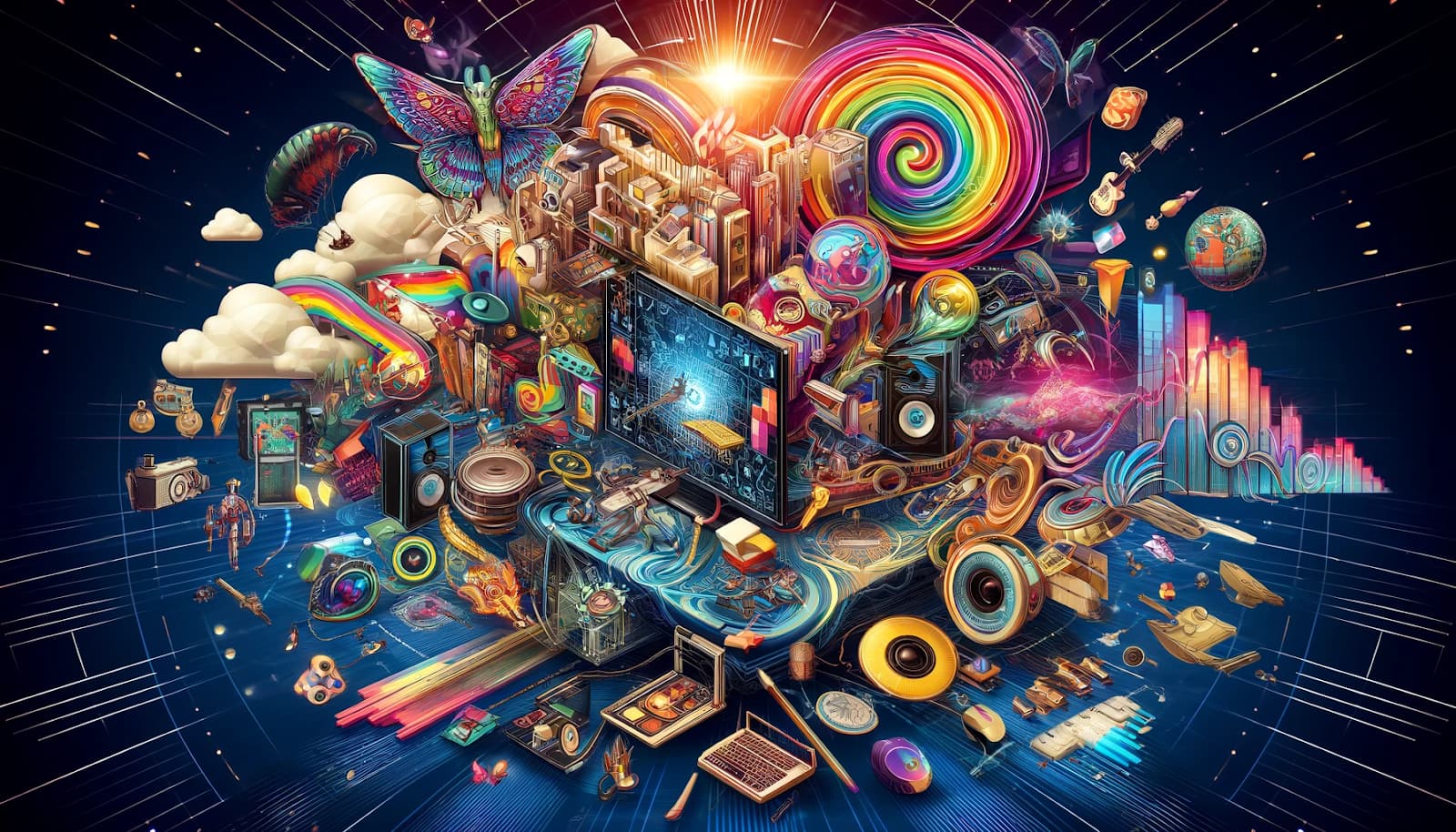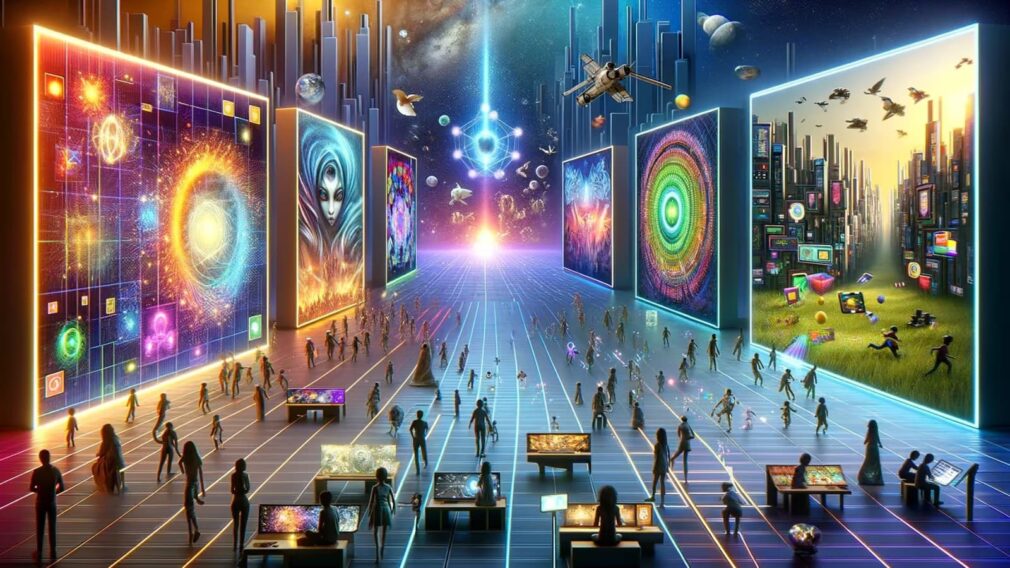
How NFTs and Cryptocurrencies Are Shaping the Future of Digital Art?
Digital art is undergoing a real revolution, and NFTs and cryptocurrencies are becoming not just fashion trends, but the basis of this transformation. These technologies not only open new horizons for artists, but also change the very concept of art, turning it into unique digital assets that can not only be created, but also traded, collected and invested in. In this article, we will dive into how NFTs and cryptocurrencies are shaping the future of digital art, breaking down traditional barriers and creating space for new forms of creativity and business models.
What are NFT and cryptocurrencies?
NFTs: a new way to own digital art
Non-fungible tokens (NFTs) are unique digital assets that verify ownership of a specific work of art or object. Unlike cryptocurrencies like Bitcoin or Ethereum, NFTs are non-interchangeable, each possessing distinct properties. Stored on a blockchain, NFTs track provenance, ownership, and transaction history, ensuring authenticity and rarity. This makes them a valuable tool for collectors and artists, providing verifiable proof of ownership of digital works.
Cryptocurrencies: the backbone of the digital economy
Digital currencies that offer anonymity and security for transactions on the blockchain include etherium and bitcoin. Digital payments, NFT purchases, and other blockchain-related transactions all use these currencies. Efirium, for example, is the basis for creating NFTs, thanks to its support for smart contracts that allow for the creation of unique digital assets. In addition, cryptocurrencies are actively used by bitcoin gambling sites, which contributes to the popularization of decentralized finance and pushes the boundaries of the traditional gambling world.
How are NFT and cryptocurrencies changing digital art?
Democratizing the art market
NFTs are revolutionizing the traditional art market by enabling artists to bypass galleries and auction houses, allowing for direct sales of their works. This disrupts established norms, lowering entry barriers and broadening market access for a diverse array of creators. Through online platforms and blockchain technology, artists can seamlessly verify the authenticity and ownership of their pieces. This innovation unlocks fresh opportunities for individuals who were previously excluded from conventional sales avenues.
Transparency and security of transactions
Blockchain, on which NFT and cryptocurrencies are based, provides complete transparency for all transactions. Every artwork and its sale is recorded in a distributed registry that cannot be altered or tampered with. This eliminates the possibility of fraud, such as fake sales or forgeries of works. For collectors and buyers, it creates confidence that the object being purchased is authentic and unique, and that all terms of the transaction are protected from third-party interference.

Uniqueness and scarcity
One of the key aspects of NFTs is their uniqueness. Unlike traditional digital works that can be easily copied and distributed, NFTs have a limited number of copies and can only exist in one unique form. Each token is tied to a specific work and its authenticity is verified using blockchain. This ensures that collectors are buying originals, not copies, and gives artworks added value. The limited number of NTFs also makes them attractive to investors, creating new opportunities for collecting and trading in the digital space.
Benefits for artists and collectors
- Artists: new opportunities for monetization
NFT and cryptocurrencies are opening up new ways for artists to monetize their work. Instead of selling through galleries, they can directly sell their works to buyers. Moreover, with each subsequent resale, artists receive royalties, giving them a steady income and more control over their works. This creates new financial opportunities and helps build a sustainable income in the long term.
- Collectors: access to exclusive works
For collectors, NFTs offer unique, genuine digital works. Each NFT is linked to a specific object and recorded on a blockchain, which guarantees authenticity and protects ownership. Collectors can be assured that they are buying an original, not a copy, and can also easily sell the work on the secondary market, providing additional investment opportunities.
Impact of NFT on traditional art
Competition with traditional galleries
NFTs are causing competition for established galleries, which is drastically altering the art market. Through blockchain networks, artists may now sell their work directly to consumers, bypassing middlemen like auction houses and galleries. This gives them more control over their works and allows them to make a profit without the cost of commissions. Moreover, online exhibitions and platforms open up access to a global audience, making art accessible to people all over the world. This approach not only expands opportunities for artists, but also changes the very structure of the art market, providing more flexible and independent ways of selling.
New artwork formats
NFTs enable artists to produce dynamic, interactive art forms in addition to static visuals. Unlike traditional art, which is limited to physical formats, NFTs allow artists to work with animations, videos, music and even virtual worlds. This opens up new horizons for creativity, giving artists more freedom to express ideas. Interactive elements, such as changing works in which the viewer can participate, add a new experience of experiencing art. Such innovations greatly expand the possibilities for innovation in digital art and offer viewers unique ways to interact with the works.
The future of digital art: trends and forecasts
- Integration with meta-universes
As meta-universes continue to evolve, NFTs are poised to play a pivotal role in the realm of digital art. Artists will gain the ability to craft and sell their creations within virtual environments, curating online exhibitions and galleries. Collectors, in turn, will experience art in innovative digital spaces, while also having the opportunity to store and showcase their pieces in virtual collections, further enhancing their value and exclusivity.
- Environmental initiatives
In response to environmental concerns related to the high energy costs of existing blockchains, greener and more energy efficient technologies are being developed for the future. The adoption of Proof of Stake blockchains and other energy efficient solutions will reduce carbon footprints, making NFT trading more sustainable and environmentally friendly.
- Investment potential
Digital art based on NFTs and cryptocurrencies is becoming increasingly attractive to investors who view it as a long-term asset. Similar to traditional investments such as real estate or stocks, NFTs are starting to generate returns. The growing interest in digital art as a way to diversify investment portfolios is expected to make NFTs an important element of financial markets.